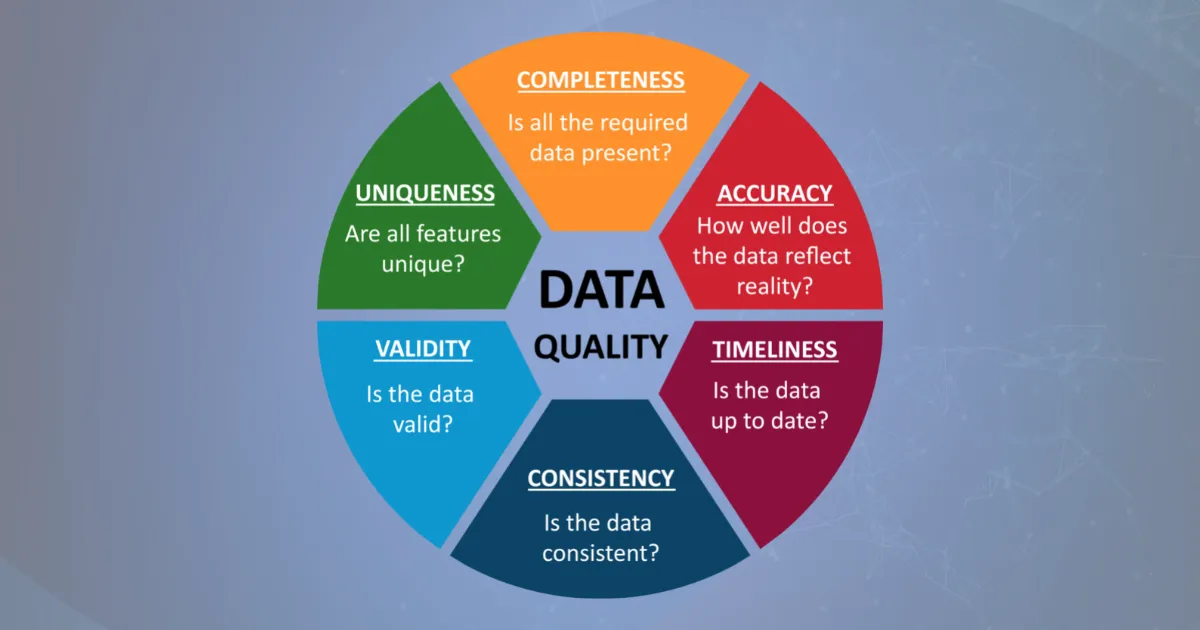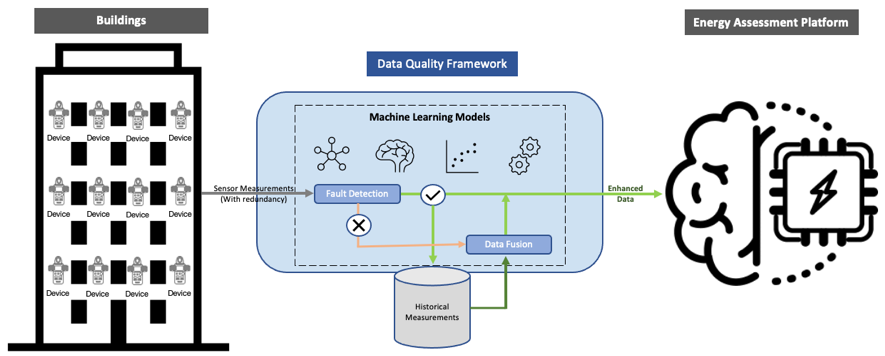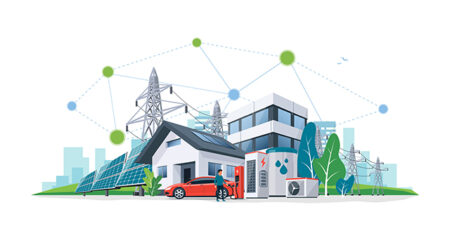The fundamental role of Data Quality (DQ) in buildings energy management.
Intelligent building systems enhance buildings’ efficiency, sustainability, and security. These systems consist primarily of Internet of Things (IoT) devices that gather valuable data, including those related to energy usage, environment quality, and occupancy. These data enable assessing and diagnosing the building’s operating conditions and energy efficiency, aiming to optimize energy consumption and cost savings. Additionally, smart buildings can provide a better experience for occupants through personalized temperature and lighting control, automated check-in, and access control systems. By leveraging these technologies, occupants can enjoy a more comfortable and efficient living or working environment.
Intelligent systems are sensitive to poor data quality caused by IoT devices’ faults, such as incorrect readings, malfunctions, or communication failures, to mention a few. Poor data quality can lead to inaccurate or ineffective assessments and decisions, potentially resulting in wasted energy and increased costs. Given the fundamental role of data quality in Building Energy Management Systems (BEMS), data should be timely, complete, accurate, and precise.
Intelligent building systems can unlock significant benefits for building owners, managers, and occupants by prioritizing data quality. These benefits include reduced energy consumption and costs, improved comfort and productivity, and enhanced sustainability and environmental performance. Therefore, investing in data quality is critical to the continued success of any smart-building strategy.

The Smart2B and SATO projects, members of the EU4BET project cluster, make extensive use of IoT devices and sensors to measure the building and building systems state. These are particularly crucial as they are the primary means of interconnecting existing equipment and transferring the collected data to management platforms. Despite their importance, sensors suffer faults due to various factors, including physical issues related to the sensors, environmental operating conditions, calibration, interference, or communication problems. These faults may induce errors, such as measurement drifts, offsets, noise, outliers, unexpected lack of accuracy or precision, noise, and missing or delayed measurements.
Improving data quality involves statistical and machine-learning methods and techniques to identify errors, correct data, and fill in any missing data. In an energy management platform, ensuring timely data quality monitoring, assessment, and enhancement is crucial. Failure to do so can compromise the BEMS effectiveness, resulting in higher costs and suboptimal performance. Therefore, the data quality processes must occur before making the data available for consumption, thus preventing incorrect or incomplete data from negatively affecting data-driven energy management processes.

The SATO project is developing a generalized data quality framework for regularly sampled sensors, as shown in the figure depicting the framework and a high-level view of the data flow. From an operational point of view, it receives sensor measurements originating in buildings and provides corrected measurements and an associated data quality assessment or index. A historical measurement repository stores the original sensor readings and any corrections made.
The framework considers models of sensor failure modes, application data quality requirements and domain knowledge, and generalized machine learning methodologies for decision-making and model design. The process employs data fusion techniques using machine learning to model the behavior of each sensor according to previous measurements and context information. Such models are created before applying the framework procedures, using a historical data set of past sensor readings. For fault-detection purposes, each sensor is represented by at least two models exploring different temporal, spatial, and value correlations between the target sensor and a building context-based combination of sensors.













